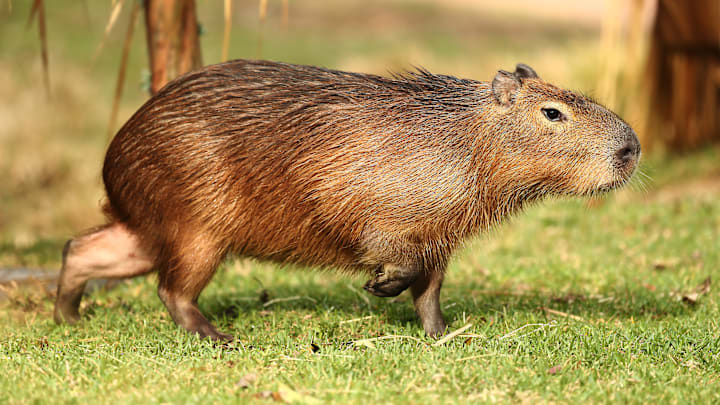It's Catholic tradition to abstain from eating meat on Fridays during Lent. If you want to observe the religious practice without reducing your protein intake, don't worry: The church's idea of meat differs from your standard vegetarian's. By the Vatican's definition, most aquatic animals don't qualify as meat. In addition to fish, beavers, muskrats, and capybaras are acceptable to eat on the Fridays leading up to Easter, according to Food & Wine.
During Lent, many Catholics deny themselves earthly pleasures to honor Jesus's sacrifice. Abstaining from meat has nothing to do with animal rights; instead, it's supposed to be a break from an ingredient traditionally viewed as indulgent and luxurious. That's why beef, pork, and poultry are considered meat but fish isn't. Fish was thought of as a "simple" source of protein in the Middle Ages, whereas meat from land animals was considered rich and therefore more "sinful."
As is the case with the laws of most religions, Catholics have found creative ways around this rule over the centuries. Between the 16th and 18th centuries, a clergyman in Venezuela wrote to the Vatican asking if it was alright to eat capybaras during times of fasting. The South American rodents (the largest on Earth) are certainly not fish, but because they spend a lot of time swimming, the church decided to classify them as such. The Vatican has also made exceptions for other semi-aquatic mammals like beavers and muskrats. Reptiles that live in water, like turtles and alligators, qualify as fish during Lent as well.
Eating mammal meat during a Lenten Friday may seem like cheating, but this loophole doesn't necessarily cheapen the meaning of the fast. And outside certain parts of the world, the exceptions are rarely taken advantage of. That's why McDonald's introduced the Filet-O-Fish to court Catholics in the 1960s instead of the McMuskrat.
[h/t Food & Wine]
